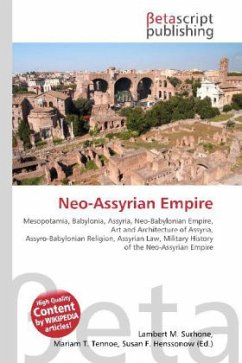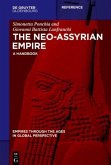Please note that the content of this book primarily consists of articles available from Wikipedia or other free sources online.The Neo-Assyrian Empire was a period of Mesopotamian history which began in 934 BC and ended in 609 BC. During this period, Assyria assumed a position as a great regional power, vying with Babylonia and other lesser powers for dominance of the region, though not until the reforms of Tiglath-Pileser III in the 8th century BC, did it become a powerful and vast empire. In the Middle Assyrian period of the Late Bronze Age, Assyria had been a minor kingdom of northern Mesopotamia (modern-day northern Iraq), competing for dominance with its southern Mesopotamian rival Babylonia. Beginning with the campaign of Adad-nirari II, it became a great regional power, growing to be a serious threat to 25th dynasty Egypt. The Neo-Assyrian Empire succeeded the Middle Assyrian period (14th to 10th century BC). Some scholars, such as Richard Nelson Frye, regard the Neo-Assyrian Empire to be the first real empire in human history. During this period, Aramaic was also made an official language of the empire, alongside the Akkadian language.
Bitte wählen Sie Ihr Anliegen aus.
Rechnungen
Retourenschein anfordern
Bestellstatus
Storno








